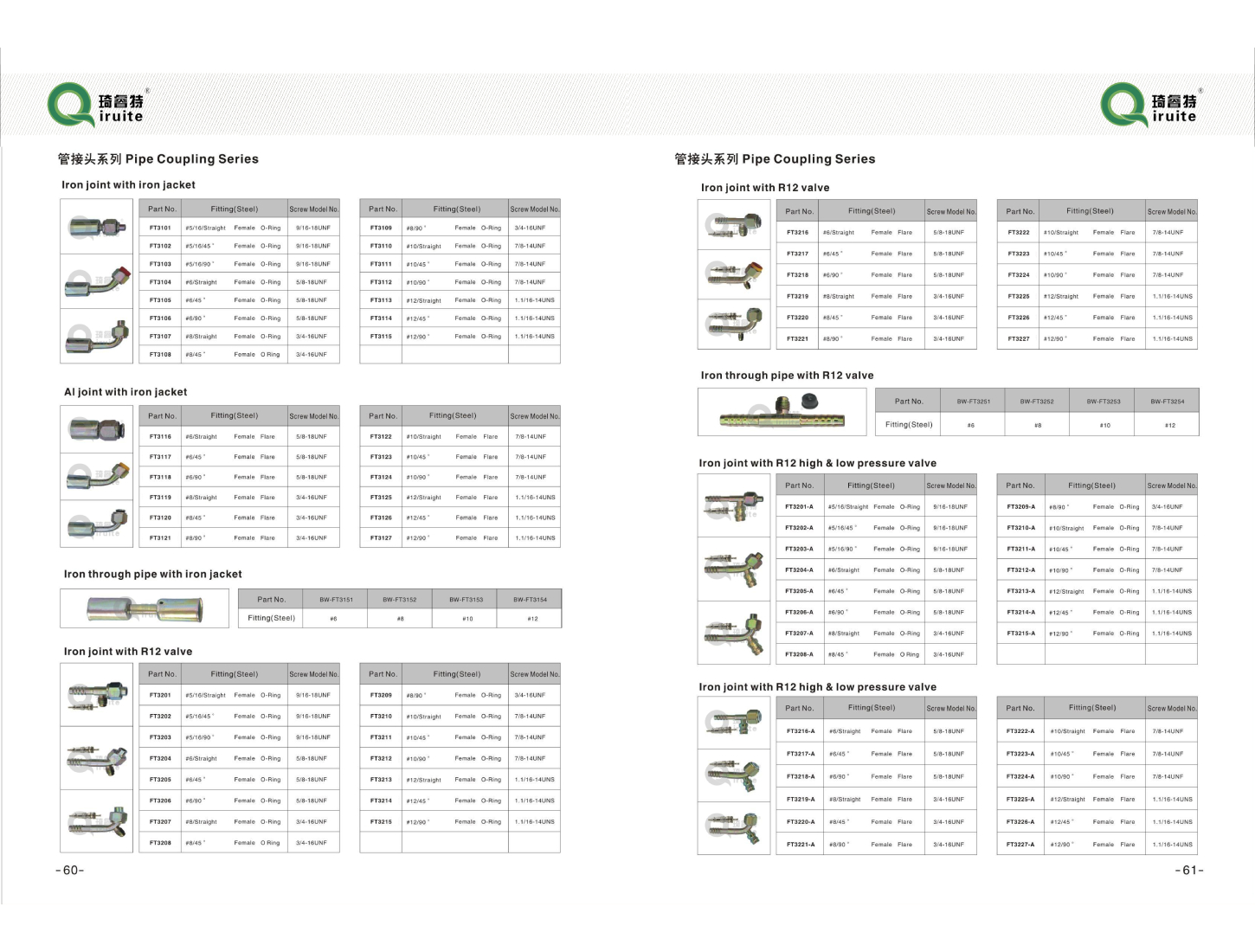Guide to GM Power Steering Hose Fittings and Their Importance in Vehicle Maintenance and Repair
Understanding GM Power Steering Hose Fittings A Comprehensive Guide
Power steering systems are an essential component of modern vehicles, significantly enhancing the driver’s control and comfort. One crucial aspect of these systems is the power steering hose and its fittings, particularly in General Motors (GM) vehicles. Understanding GM power steering hose fittings is important for both DIY enthusiasts and professional mechanics, as these fittings play a vital role in the overall performance of the steering system.
What are Power Steering Hose Fittings?
Power steering hose fittings are the connectors that join the power steering hoses to the steering gear and the power steering pump. These fittings ensure that fluid can flow seamlessly through the system, helping to create the hydraulic pressure needed for effortless steering. The design and material of these fittings are crucial not only for functionality but also for durability and resistance to wear and corrosion.
Types of Power Steering Hose Fittings
GM vehicles typically use a variety of hose fittings, including hydraulic fittings, threaded fittings, and quick-disconnect fittings.
1. Hydraulic Fittings These are designed to handle high-pressure conditions. They are often made of steel or aluminum and provide a secure connection that minimizes fluid leakage.
2. Threaded Fittings These can be either male or female and are generally used in applications where a permanent connection is desired. Ensuring that the threads are clean and well-lubricated during installation can prevent wear and tear.
3. Quick-Disconnect Fittings These allow for easy removal and replacement of hoses. They are especially useful during maintenance or when replacing components in the power steering system.
gm power steering hose fittings

Common Problems and Solutions
Issues with power steering hose fittings can lead to fluid leaks, which may result in a loss of steering assistance. A few common problems include
- Corrosion Over time, the fittings can corrode due to exposure to moisture and contaminants. Regular inspections can help identify corrosion before it leads to leaks.
- Improper Installation If the fittings are not installed correctly, they can loosen or become damaged. It is essential to follow manufacturer specifications for torque settings during installation.
- Wear and Tear Continuous use can lead to wear on the fittings. Replacing worn-out fittings is a necessary maintenance task that should not be overlooked.
Choosing the Right Fittings
When selecting power steering hose fittings for a GM vehicle, it’s crucial to consider several factors, including compatibility, pressure ratings, and material. Using OEM (Original Equipment Manufacturer) parts is often recommended, as they are designed specifically for your vehicle’s make and model. Additionally, aftermarket parts can offer alternatives, but it’s essential to ensure they meet the necessary specifications to avoid potential issues down the line.
Conclusion
Understanding GM power steering hose fittings is vital for maintaining the efficiency and safety of your vehicle’s steering system. Regular inspections for signs of wear or corrosion, careful installation, and the use of high-quality fittings can help prolong the life of your power steering system. Whether you’re a DIY mechanic or taking your vehicle to a professional, knowledge of these fittings will aid in ensuring a reliable and responsive steering experience.
-
Ultimate Spiral Protection for Hoses & CablesNewsJun.26,2025
-
The Ultimate Quick-Connect Solutions for Every NeedNewsJun.26,2025
-
SAE J1401 Brake Hose: Reliable Choice for Safe BrakingNewsJun.26,2025
-
Reliable J2064 A/C Hoses for Real-World Cooling NeedsNewsJun.26,2025
-
Heavy-Duty Sewer Jetting Hoses Built to LastNewsJun.26,2025
-
Fix Power Steering Tube Leaks Fast – Durable & Affordable SolutionNewsJun.26,2025

